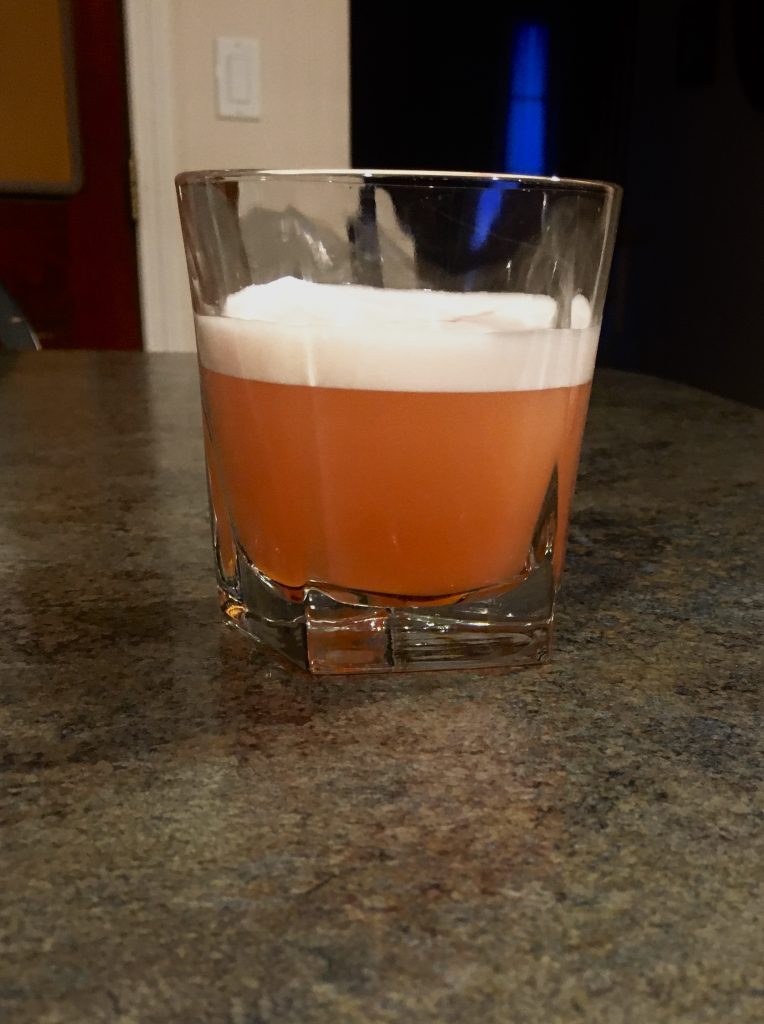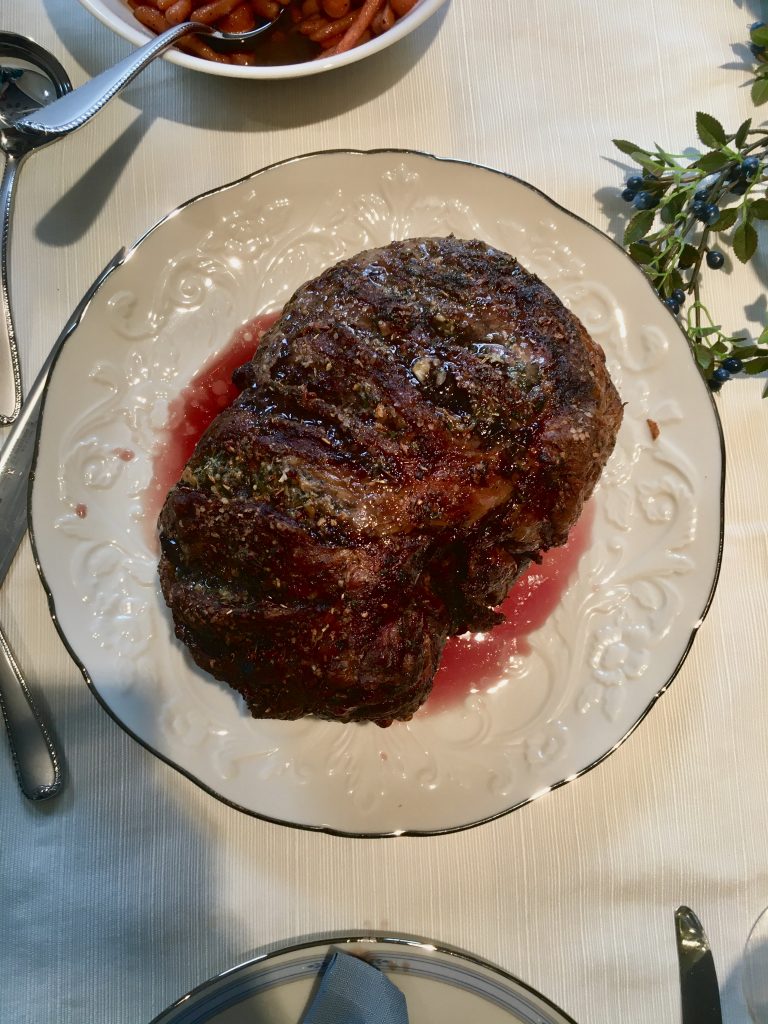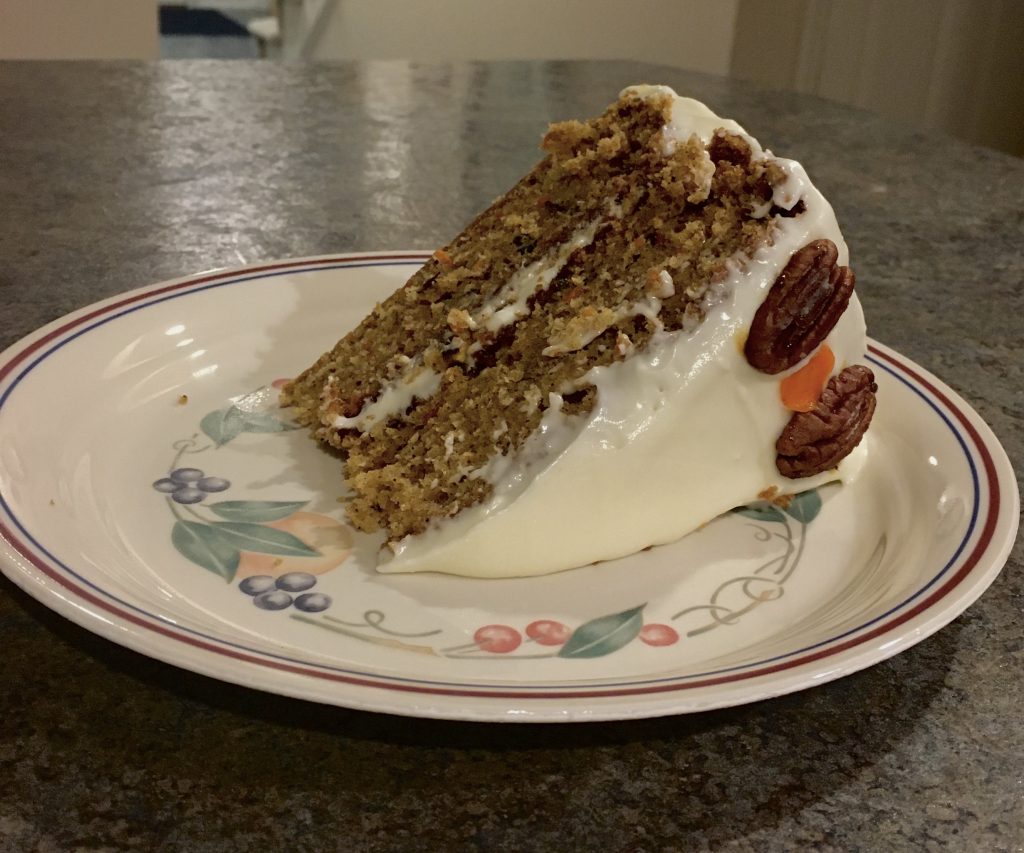With Passover and Easter happening not long ago and Ramadan having just begun, we are in a time of major religious celebrations, each with their own particular food-related connections. There are a lot of traditions that may have had to be adjusted or made anew this year in that respect. Maybe you aren’t able to gather with those you typically break the fast with. Or despite your best efforts you simply could not get your hands on a bag of matzo meal. Or maybe you always make a ham, and had to punt with a different protein. Our relationship to our celebratory traditions in the kitchen can be extremely deep and personal. Being one who would rather bake an extra pie or two at Thanksgiving if it meant still having the same three in the mix that we always have, I tend to have strong feelings about maintaining dining room table tradition. These past couple of weeks I’ve been able to uphold some classics and bring back some that had been left behind by the years, while also creating some new treats worthy for a celebration.
Bread: Hot Cross Buns
A bread more often seen in song than on a bakery menu (at least here in the U.S.), the hot cross bun is a traditional treat of Easter. The simple explanation as to why is rooted in the symbolism of the titular cross. Originally eaten on Good Friday, the cross supposedly symbolized Jesus’ crucifixion. The bun became so intertwined with the holy symbolism that Queen Elizabeth I ruled that they could not be sold on any day other than Good Friday, Christmas, or burials. But other, more superstitious explanationssurrounding the bun abound. Some said that bread baked on this day would never go stale, or that bread from this day hung from string in the home helped ward off bad spirits.
Whatever the bun’s origins, the yeasted, dried fruit-filled pastry has survived as a staple for this time of the year for literal centuries. Despite this, I had never actually had one! So this year, as I was actually home for the holiday and had the time, I set out to make not only my first hot cross bun, but my first filled bread of any sort!
I decided to take my cues from Mary Berryand her baking bible, as the British seemed to really know their way around their candied peel and sultana speckled breads. But this decision came with one small problem. For while most of the recipe was fairly standard and not too technically difficult, Mary called for mixed spice. While here in America pumpkin spice is our run of the mill warm spice mix, the brits have their own slightly different blend that can be seen commonly called for in breads and biscuits. Though the different mixes vary slightly in some of the spices included and the proportions of each, those typically included are allspice, cinnamon, nutmeg, mace, cloves, coriander, caraway, and ginger. Luckily, my mother keeps a well-stocked spice rack, and all of the individual spices were on hand. So to make the requested measurement of mixed spice, I combined small amounts of each as evenly as I could in the soon to be mentioned mortar and pestle.
While that took several minutes, once it was added it was smooth sailing. The stand mixer did all the work kneading until smooth, all the while evenly incorporating the raisins (in place of sultanas) and finely chopped dried apricot (in place of candied peel, and a rather sticky chop), and after resting for two hours in the proofing bin the dough was certainly puffy and tripled in size. However, due to some mathematical errors I divided the dough into eight large buns rather than the twelve it was supposed to yield. After trying to break off pieces of some to create an appropriately sized group and realizing that it was simply not the way to go, I reassembled them, asserting to myself that there was no such thing as a bun too large. Even if that bun had a bit of a Frankenstein’s monster look to them now.
Golden brown and topped with a sugar glaze and icing cross, their slightly misshapen forms could be overlooked, though. And with a warm, spongy, fruity bite, I could be nothing but pleased. The conglomeration of warm spices and the brightness from the dried fruit is all one could want from a celebration bun. A little more special than your everyday breakfast pastry, hot cross buns are perfectly appropriate for any meal or occasion you want to make just a touch sweeter.
Gadget: Mortar and Pestle
Our mortar and pestle was originally an aesthetic purchase by my sister many years ago. The very idea that we would be using such a thing with all the electronic and motorized gadgets we had on hand was absurd. And when would we even be grinding spices, anyway? They all come ready to use in containers!
Fast forward many years later to find me pounding caraway seeds to a dust, combining them with a handful of other spices to create my own mixed spice. Or smashing garlic cloves into a paste with a mixture of herbs. Or any time I’m using rosemary. Which, if you know my cooking habits, is a lot.
Sure, you don’t needa mortar and pestle. Because there are a lot of times when you don’t needto grind your spices fresh, or make a garlic and herb paste. And when you do, you can. Uh. Use the butt end of a knife? Is what I’ve heard? But frankly that seems dangerous. I would tend more towards using that wine bottle you also use as a rolling pin. But for us, the mortar and pestle has definitely been one of the most unexpectedly useful tools of the kitchen, especially recently. Because when you doneed to grind your spices, it helps to have a tool that’s been helping humans do it for thousands of years.
Drink: Aperol
This Italian aperitif is best known for the cocktail that bears its name. Popular at fancy summer cocktail parties, the Aperol spritz is a colorful concoction of the fruity yet bitter liqueur and prosecco with a splash of seltzer. And while I’m a fan of this application, I thought there must be another way that Aperol could be combined. Ideally one that doesn’t involve me breaking open a bottle of prosecco.
So after a little research and contemplation, I took a swing at crafting my own cocktail with it. 1 ounce Aperol, 1.5 ounces gin, 1 ounce lemon juice, and a splash of aquafaba shaken with ice produced a delightful foamy, pink concoction that just so happened to also suit my taste. It was both an aesthetic and palatal pick me up that I fully intend to take with me into the summer months. The only problem is its lack of name for when the time comes that ordering at a bar is a thing again. Any ideas?
Meal: Roast Lamb
Just as Thanksgiving means Turkey, Easter means lamb for the Swonger household. Usually this is had in the form of lamb shanks or chops. But this year if we were going to have lamb, it meant making an investment. Because the only lamb left in the store when my Mom ventured out was a whole rolled boneless leg. This hunky cut called for a grand, well-planned roast. To check off the grand we made our first use of the herbs de provenceblend of many herbs, not the least of which is lavender. This common candle scent was new to me in the kitchen, and it felt like the proper time and application to try it out for the first time. But aside from that, I kept preparation simple. In the early afternoon I cut twelve, two-inch-deep slits along the fat cap and rubbed my self-muddled mixture of garlic and herbs de province into each. After covering the whole cut with salt, pepper, and some more of the herbs mixed with a few tablespoons of butter, it was all up to the oven to roast it for the next three and a half hours.
When I emerged from my activities a few hours later to prep the side dishes, the smell had wafted throughout the entire house. Rosemary, lavender, and garlic filled the air with their festive scents, and I knew then that no matter what happened in terms of flavor, I was a fan of this herb application. The roast emerged at last for its small 15-minute rest before carving, leaving us to stare at the beautifully deep brown outside, encrusted from the fat of the butter. And once allowed its rest, each slice cut through to reveal a tender, slightly pink cut of meat that one might expect to see in a magazine’s holiday issue. Juicy from letting it rest, and filled with flavor from the simple herb rub, this was a celebration roast at its best. And while we didn’t even make it halfway through what was prepared that night, the simple preparation meant it was easily incorporated into leftovers for days after! Tasty and efficient!
Dessert: Carrot Cake
I have somehow never made a carrot cake despite my cake-obsessed tendencies. I’ve always been more intent on getting chocolate cake justright, or wanting to focus on my frosting technique with a basic yellow cake than try something more involved. But it is the time of year when carrot cake is in the air, and with a fortuitous supply of the eponymous root vegetable I decided it was time to tackle it. And while historically not one to buy into the popular cream cheese frosting propaganda, carrot cake is currently my one exception.
After much research and recipe comparison, I settled on this one from Food52. For some reason, probably due to the addition of shredded carrots and nuts, I had it in my head that the pre-bake process was going to be much more difficult and time consuming. But with the assistance of the food processor, the carrots were quickly shredded and nuts loosely chopped, making it little more work than any other cake sans additions. And while I followed the recipe down to the letter for the most part, I made one small addition of a couple dollops of Greek yogurt. I am always dubious of a cake recipe that doesn’t involve buttermilk, sour cream, or yogurt. If you don’t include it, then I will! The consequences have only been amazing so far!
I also added a little of that same yogurt into my cream cheese frosting for which I riffed off this Food Network recipe. This may have prevented it from becoming is stiff as I wanted it to be for optimal cake decoration and construction, but the small boost in tang was 100% worth it. While the cakes cooled in their golden brown glory I quickly candied some pecans and carrots to place on top, a process I had also never done before, but was similarly surprisingly easy.
After intermittent chilling in the fridge and fiddling with the offset spatula, the result was perhaps my cleanest looking layer cake to date (decoration is my constant struggle), as well as one of the tastiest. The sponge was insanely moist but not at all dense with just enough carrots and nuts throughout to provide texture, but not so many that the cake itself got lost. The frosting was silky smooth with a perfect duel sugary/tangy finish, and the candied nuts and carrots were an extra fun crunch once they were reached on the top edge. All the flavor and texture boxes were checked. Three new experiences in cake, frosting, and decoration preparation came together for a cake worthy to help celebrate NH’s (hopefully) last day of snow and season of burgeoning plant life.
While we are stuck inside and unable to physically gather for traditional means of celebration, and official holidays might not be near on the calendar for you, that doesn’t mean any old day can’t be turned into something special. Trying out a different preparation of a stand-by ingredient, or putting in the time to gussy up a dish’s presentation can make these days that are perhaps blurring together a bit a little more distinct. What have you been doing to make your meals meaningful? What new traditions did this year bring about?







